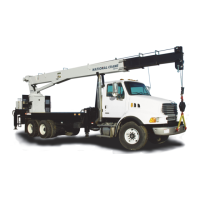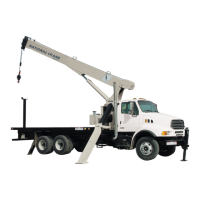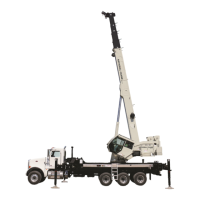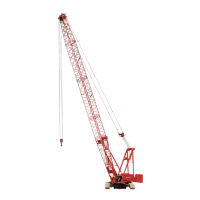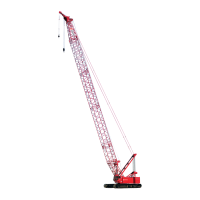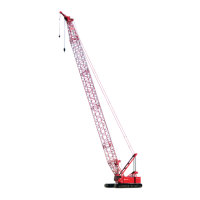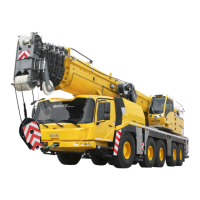OPERATING CONTROLS 1400H OPERATOR AND SERVICE MANUAL
2-16 Published 10-30-2014 Control # 040-09
Stabilizer Proximity Switch (version 2)
Remove
1. Disconnect electrical connector (1, (Figure 6)) at switch.
2. Remove the two screws (2, (Figure 6)) securing the
switch (4) to the stabilizer box; remove switch.
Install
1. Fully extend stabilizer beam (horizontally).
2. Using two screws (2, (Figure 6)) secure the switch (4) to
stabilizer box.
3. Connect electrical connector (1, (Figure 6)) to switch.
4. With power on and stabilizer beam fully extended,
ensure LED (3, (Figure 6)) on proximity switch
illuminates; retract stabilizer beam and ensure LED is
not illuminated.
Before Making the Lift
1. Unspool loadline and free load block from it's stowed
position.
2. Check all controls for proper operation by operating
each system through one complete cycle. This is
particularly important after the unit has been serviced or
repaired. If any abnormal operations are detected,
correct the condition before continuing.
3. During all operations, the controls should be metered
when beginning or terminating a movement to prevent
sudden starting or stopping which imposes undue shock
loads on the equipment. This metering can be
performed by metering the control lever and the foot
throttle.
4. Check the operating area for electric power lines.
RCL Set Up and Programming Procedure
The DS-160 operators manual located in this book
contains instruction for proper setup and operation of the
RCL system.
The correct setting is of utmost importance for the
proper functioning of the system and the crane.
Therefore, only operators who are thoroughly familiar
with the crane's load charts and the operation of the
system should execute the setting of the system
according the operating configuration of the crane.
Reading and Understanding the Load Charts
The structures and
components of your unit are
designed to provide
satisfactory service if the unit
is not loaded in excess of the
maximum rated loads
specified on the load chart.
Overloading can create
serious potential safety
hazards and can also shorten the service life of your unit. It is
important that you know the weight and radius of any load
that you are attempting to handle. This will be done
automatically but use of a dynamometer and tape measure
is recommended periodically to verify RCL accurately.
Overloading a crane can cause many types of failure
depending on the configuration and working position of the
crane, i.e. structural damage to almost any part of the crane,
hoist or cable failure and tipping the unit over.
The load chart shows the maximum rated loads
including load (weight being lifted), load handling equipment
such as slings, buckets, and downhaul weights, etc. which
can be handled by the crane and the hoist. The weight of the
load handling equipment and boom attachments must be
deducted from the maximum load rating shown on the load
chart to determine the payload which can be lifted. Additional
reduction may be necessary to make allowance for such
factors as the effects of freely swinging loads, wind, ground
conditions, out-of-level conditions and operating speeds.
The ratings shown on the outrigger full span load chart
are maximum loads and are based on the structural integrity
of the crane in shaded areas, the stability of the crane in
nonshaded areas. The stability or non shaded areas
represent a stability tipping factor of 85% when:
DANGER
!
BLOCK
SLINGS
+
LOAD
+
TOTAL RATED LOAD
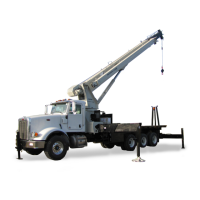
